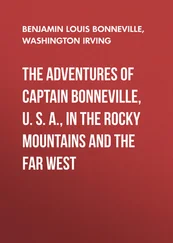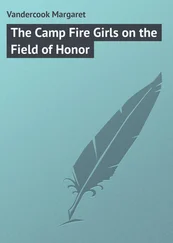I’ve gone over my checklist at least three times to make sure I’ve packed everything I intended, and I’m finally to the point of closing the bags and loading them on my old dog truck for the 100-mile ride to Anchorage. After I tighten up the nylon tie wrap on the last bag, I go sit down on the porch steps and survey what I’ve wrought.
My first thought is of last year, when I had such high hopes and saw the multicolored bags as a map of my trek across Alaska. This year it’s a bit different. The bags still outline my itinerary, but I don’t see them as magic stepping stones on a carefree camping trip. This time they represent tough goals to be won by hard work, one at a time, with patience and determination. I fully intend to open every one of them myself this year, culminating with the ones in Nome.
The next two weeks will go all too quickly and there are still many things to do before the race starts. Day by day, I’m getting closer to finishing what I started two years ago. But for the moment, I’ve reached a major milestone for this year’s race, and I might actually enjoy the normally tiring drive into town.
And when I’ve finished the food drop, I can go pick up my new Bernie Willis sled, finished just a couple of days ago. One of the more valuable lessons I’ve learned is a good sled is worth everything you pay for it. It has to be rugged enough to withstand the incredible abuse it will receive even on a short race (witness last year’s Copper Basin 300 and the Klondike 300 just past) but easy to fix when it finally meets the inevitable immovable object.
Bernie is a pilot and an aeronautical engineer (and an Iditarod veteran) who appreciates simplicity and ease of maintenance. In the best Alaskan tradition, he has applied modern technology to an old concept. His sleds ride like Cadillacs but can be fixed with duct tape, hose clamps, and bungee cords. After last year I vowed never to be caught on a race trail without a Willis sled and the first thing I did when I sold the Cessna was give Bernie a call. The sled will be an interesting replacement for my airplane.
I do know one thing: running the sled will probably cost me more every year than the plane ever did, what with care and feeding of the dogs and all the expenses connected with races. And that, in turn, means I’ll have to work longer hours at Hudson’s to earn the money to pay for everything. There’s a twist I hadn’t thought about: I sold my plane, so I’ll have to fly more. Only in Alaska….
February 24, 1996
Wasilla, Alaska
It’s Kim’s turn in the spotlight as she takes most of my team on the Junior Iditarod. This year the race has turned ugly, with lots of fresh snow out on the river and strong winds to drift it into a hard-crusted obstacle course, all combined with subzero temperatures. Bert and Reb and I have been waiting all afternoon as the delays grow longer and the reports from the trail grow worse.
By the time the first couple of teams have crossed the finish line on Lake Lucille, conditions have become so bad most of the trailing teams are delayed well into the evening. The race marshal finally decides to move the finish line back up the trail almost six miles. Everyone moves out in a convoy of dog trucks to intercept the inbound teams.
After an hour of waiting, the teams start to straggle in, somewhat the worse for wear. Kim gets the red lantern, but she has held the team together in the face of the elements over a difficult-to-follow trail and everyone looks to be in good shape. As I expected, the dogs didn’t set any new land speed records. But they continued to work for her even when things got tough, and that’s what counts.
I’m proud of her and of the dogs. Like the Klondike last month, just finishing in good order has been an accomplishment. And now it’s almost time for the big show on Fourth Avenue. Kim will be riding my second sled out of the starting chute this year. After tonight, no one can say she hasn’t earned it.
February 29, 1996
Anchorage, Alaska
I-Day is approaching with terrifying speed. I know how the citizens of south Florida must have felt as they watched Hurricane Andrew grind inexorably toward them, or the inhabitants of Pompeii as the ash cloud from Vesuvius began to descend from the heavens. Or perhaps more appropriately, one of my friends said I’m starting to have the “deer in the headlights” look.
The week has been almost completely consumed with meetings and banquets and all the other events leading up to the moment of truth on Fourth Avenue. Of course, there have also been the last-minute shopping trips for all of the zillion things I think I’ll need to take with me on the trail: my checklist actually has more than 150 items on it, all of which I’ll try to stuff into the sled, many of which I’ll probably discard even before I leave the starting gate.
I’m riding back to Montana Creek with Ron and Steve Adkins after the mushers’ banquet in Anchorage (I’ve drawn number 50). I didn’t want to drive my car back because I’m already so tired I was worried about falling asleep and running off the road. As I half-doze in the passenger seat, the realization sinks in that my date with destiny on Fourth Avenue is barely 24 hours away.
Granted, I’ll get a brief reprieve after Saturday’s 20-mile run to Eagle River, but it’s time to put on my game face. Once I leave the restart in Wasilla Sunday morning, I will be living on the back of the sled for two weeks, with only occasional stops at checkpoints to remind me civilization still exists.
I’ve been having serious cases of the butterflies all week and I haven’t gotten enough sleep despite my best intentions, but now I’m shifting into the go-to-Nome mode anyway. I’m mentally beginning the adjustment to the race routine, to the checkpoint-to-checkpoint rhythm that will govern everything for almost 1,200 miles.
Last year I didn’t have the faintest idea what I was walking into; I might as well have been a fifteenth-century sailor pushing off toward the new continent claimed by all the legends to lie just beyond the horizon. This year I know only too well the new continent is a lot farther than the horizon, and there are plenty of places along the way where I can fall off the edge of the earth if I’m not careful.
I’ll sleep as late as I dare in the morning and then load the dogs and my gear and the sled onto the dog truck for the trip back into town. Ron has graciously agreed to feed my remaining dogs while I’m away, and to house-sit my cabin to make sure the generator works and the pipes don’t freeze. I’ve already paid as many bills as I can; at least my most ravening creditors will remain at bay until after I return. I’ll have enough things to occupy me on the trail without worrying if the bank will be trying to repossess my car.
And I’ve got to make certain I have enough left on my credit card for an airline ticket back from Nome. The $700 or so for drivers to ship themselves and their dogs back to Anchorage has become a hardship for shoestring mushers; more than a few have had to sell dogs and equipment in Nome to get cash for a ticket. Until a couple of years ago the fare was half what it is now, but new airline management stopped the good deal. To its credit, the airline contributes to the race, but this still doesn’t ease the way home for mushers who finish out of the money.
Partly to attenuate return expenses, the race started paying every finisher $1,000 in 1990, but dwindling budgets killed the stipend within a couple of years. The net result since then has been to hang some mushers out to dry after they’ve struggled to Nome. It’s an often-cited example of how the Iditarod has become so expensive many mushers are simply unable to afford it any more. This cost inflation has especially affected Native drivers from cash-short Bush communities who must fly their teams to the start of the race and home from the finish.
Читать дальше












